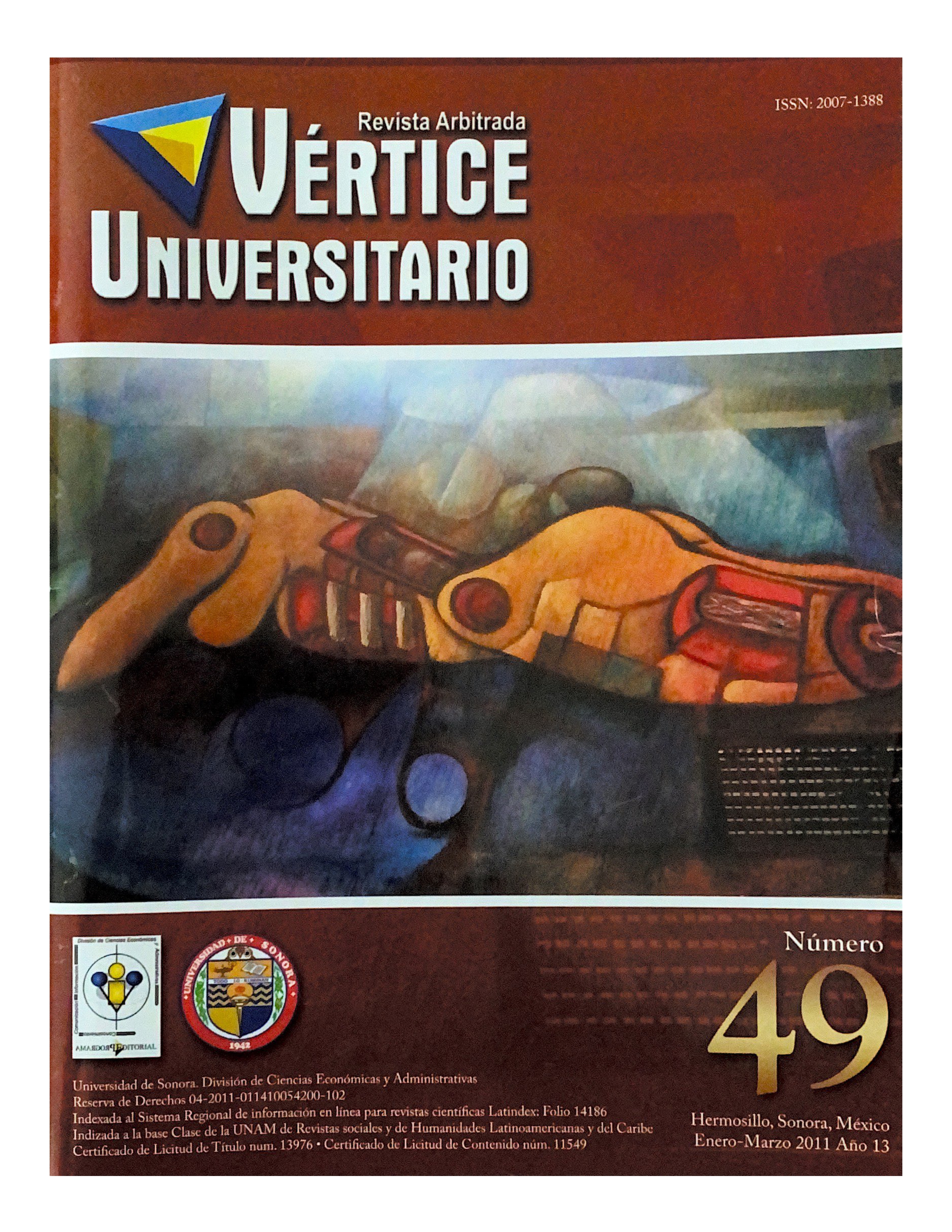Blurred zone in knowledge: Is customer loyalty really a consequence of high satisfaction?
Keywords:
Market share, Loyalty, Fidelization, NeuromarketingAbstract
Given the importance that has the clients' base for the profitability of the organizations, there are innumerable the examples of companies that try to protect itself in the market share and in the loyalty of its clients as source of income. According to the above, it seems to come, according to a part of the investigators as the result of a high satisfaction in the clients. It might turn out to be difficult to refute such an obvious and forceful affirmation, but there is another part of the investigators who promulgate the opposite, that is to say, that the loyalty not necessarily comes from a high satisfaction. The present investigation, of theoretical character, chases to analyze and to understand the difference of currents that exist concerning the relation between the concepts of satisfaction and loyalty, including in addition a vision more updated with the contributions that the neuromarketing has realized concerning this discussion.
Downloads
References
Aaker, D (1996). "Construir Marcas Poderosas" Madrid. Ediciones Gestión 2000 S.A.
Aldous Huxley (1932): Brave New World, Chatto and Windus, Londres.
Arrondo, E., Berné, C., Mugica, J.M. y Rivera, P. (2002). "Modelling of customer retention in multiformat retailing", International Review of Retail, Distribution and Consumer Research, 12 (3), pp. 281-296.
Barroso, C. y Martin, E. (1999). Marketing relacional. ESIC, Madrid. De Juan Vigaray, Mª Dolores. (2005) "Comercialización y Retailing" Madrid. Pearson Prentice Hall.
Beme, C., Mugica. J.M. y Yaque, M.J. (1996): "La gestión estratégica y los conceptos de calidad percibida, satisfacción del cliente y lealtad" Economia Industrial, 307. pp. 63-74.
Cammbell, Dennis (2002) "Putting strategy hypotheses to the test with cause-and-effect analysis" Balanced Scorecard Report, September-October, p. 3.
Cisneros, G., Molina, J. (1996): "Fidelización efectiva: no caiga en los errores más frecuentes", Harvard Deusto Marketing y Ventas, Noviembre-Diciembre, p. 30-35.
Claver, E. Llopis, J y Tarı, J. J. (1999) "Calidad y dirección de empresas". Civitas, Madrid, 1999.
Delgado, E. (2004): "Estado actual de la investigación sobre lealtad de marca: una revisión teórica". Revista de Dirección, Organización y Administración de Empresas. N.° 30. pp. 16-24.
Diana, F. (1999) "Fidelización de clientes y rentabilidad" COEV Economis tes, num. 162 (2ª quincena de mayo).
Dick, A y Basu. K. (1994) "Customer Loyalty: toward and Integrated Con- ceptual Framework", Journal of de Academy of Marketing Science, Vol. 22, num 2, pp. 89-113.
Elger Christian, Einblicke ins Kundengehirn mit Verfahren der Hirnfors- chung- Ein gangbarer Weg?, Neuromarketing Kongress. Munchen 2009.
Formell, C. (1992) "A national customer satisfaction barometer: The Swedish experience" Journal of Marketing, num. 56, pp. 6-21.
Halloweli, R. (1996). "The Relationships of customer Satisfaction, Customer Loyalty, and Profitability: An Empirical Study" International Journal of Service industry Management, Volumen 7, pp. 27-42.
Hausel, Hans Georg, Vender con todos los sentidos, Neuromarketing Kon gress, Munchen 2009.
Heskett, James L., W. Earl Sasser Jr., and Leonard A. Schlesinger: "The Value Profit Chain: Treat Employees Like Customers and Customers like Employees" NY., The Free Press, 2003.
Hil, Charles W. y L., Jones, Gareth R (1996): "Administración estratégica, un enfoque integrado". Santa Fe de Bogotá. Mc Graw Hill 3 edición.
Hubert, Mirja & Kenning, Peter, "A current overview of consumer neurosciecie", Journal of Consumer Behaviour, July-October 2008.
Huete, Luis (2003) "Servicios & Beneficios" Barcelona. Ediciones Deusto.
Jacobi, Jy Chestnut. R, (1973) "Brand Loyalty vs. Repeat Purchasing Behavior", Journal of Marketing Research, Volumen 10, pp 1-9.
Jensen, J. y Hansen, T (2006). «An empirical examination of brand loyalty» Journal of Product & Brand Management. Vol. 15. N° 7. pp 442-449.
Jones, T. O, y Sasser, W. E. (1995) "Why satisfied customers effect" Harvard Business Review. November December p.p. 88-99.
Justin, R Garcia & Gad Saad "Evolutionary neuromarketing darwinizing the neuroimaging paradigm for consumer behavior" by London Jul-Oct 2008 Vol. 7. Iss. 4/5, p. 397
Kaplan Robert S., y Norton David P. (1996): "Cuadro de Mando Integral (The Balanced Scorecard)". Barcelona: Gestión 2000.
Keller, K.Ly Lehmann, D. (2006) "Brands and Branding: Research Findings and Future Priorities" Marketing Science. Vol 25. Num. 5. pp. 740-759.
Kotler, Philip, y Armstrong, Gary, (2003). "Fundamentos de Marketing". México Pearson Prentice Hall, 6ª Edición.
Kotler, P.(2006) "Cómo crear, ganar y dominar mercados", PAIDOS IBERICA.
Leroux, Joseph, Synaptic Self How ours brains become who we are 2001, New York Viking.
Neuromarketing Kongress, "En busca del Botón de Compra", Enero 2008.
Neuromarketing. Ein innovativer Ansatz zur Erklaarung des Konsumentenyer haltens unter Berucksichtigung der Wirkung von Marken (German Edition) by Christian Felix (Paperback Jun 1, 2008).
Oliver, R. L. (1999): "Whence consumer loyalty" Journal of Marketing, Volumen 63, pp 33-44.
Oliver, R. L. y Swan J. D. (1989) "Consumer Perceptions of Interpersonal Equity and Satisfaction in Transactions: A Field Survey Approach", Journal of Marketing, Vol. 53, pp 21-35.
Porter, Michael. E. (1997): "Estrategia Competitiva" México. CECSA, 23 Edición.
Reichheld, Frederick F., y Sasser, W. (1990): "Zero defections: quality comes to services", Harvard Business Review, Sept-Oct, pp 105-111.
Reichheld, FF (1993): "Loyalty-Based Management" Harvard Business Review, March-April, pp. 64-73.
Reichheld, Frederick F. (1996). "El efecto de la lealtad, la fuerza oculta detrás del crecimiento, la rentabilidad y la creación de valor en las empresas" Bogota Norma.
Rienartz. W y Kuman, V (2002) "The mismanagement of Costumer Loyalty". Harvard Business Review. Julio, pp. 4-12.
Scheier, Christian, Understanding the Intelligence, September 2001, The MIT Press.
Spitzer, Manfred, Exploratory Analysis and Data Modeling in Funcional NeuroImaging, December 2002, The MIT Press.
Wittman. Norbert, Emotional Boosting: Warum Vertrauen die Basis aller POS Entscheidungen is t, 2009, Neuromarketing Kongress, Munchen.
Vanhamme, J. (2000): "The Link between Surprise and Satisfaction: An Exploratory Research", Journal of Marketing Management, 16 (6), pp. 565-582.
Published
How to Cite
Issue
Section
License
Copyright (c) 2024

This work is licensed under a Creative Commons Attribution-ShareAlike 4.0 International License.
The opinions expressed by the authors do not strictly reflect the position of the publisher of the publication. This work is under a CC Attribution-ShareAlike 4.0


















